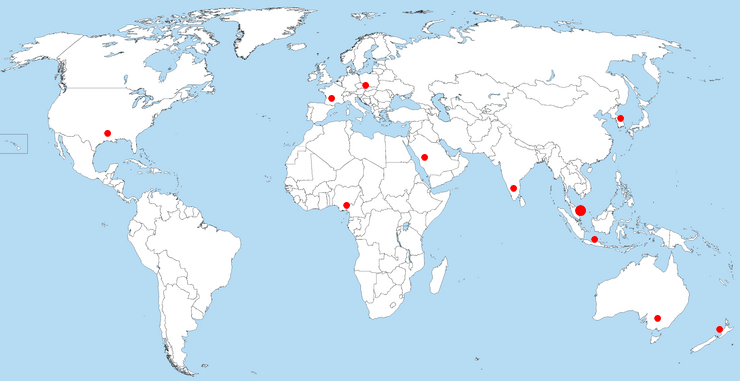Geometric Modeling and Analysis of Passenger Ship Hull Model Using FreeShip Plus
Keywords:
Ship hull form, geometric model, FreeShip Plus, computer aided designAbstract
The good quality of the parametric ship hull form model from Computer Aided Design (CAD) is indeed relevant to Computational Fluid Dynamics (CFD). The CAD must interact well with CFD to avoid too much error and problem on CFD analysis. To make a precise and an accurate geometric design of ship hull form CFD is essential because it relates to the prediction of hull performance in the CFD analysis. Thus, this research is to re-model the geometric of passenger ship hull form model (MTC 092) which was developed by Marine Technology Centre (MTC) by using CAD of open source software called FreeShip Plus. Initially, the geometric of passenger ship hull model was presented in the form of 2D lines plan drawing using AutoCAD software. Then, the lines plan drawing was imported into FreeCAD in ‘iges’ file format to undergo a digitized process by following the table of offset format. The ship hull form coordinates were next extracted into a Python script in an XYZ table which starts with ‘0’ and ends with ‘eof’. This is followedby generating the model in FreeShip Plus after importing the Python script into FreeShip Plus asa text fileusing the chine import tool in FreeShip Plus. Subsequently, FreeShip Plus generated half of the ship hull form and then exported it into Blender as an ‘obj’ file. In Blender software, the ship design process proceeded with a mirrored function then and clipped the half ship hull form into full ship hull form, after which the passenger ship hull model was saved in ‘stl’ file format. Lastly, the hydrostatic data results of the passenger ship hull model involving a set of geometric parameters in FreeShip Plus show a maximum error of 2.77% compared to the MTC 092 model in a towing tank test, thereby implying the validity and accuracy of the analysis. The significance of this study is expected to help proliferate the acceptance on the use of open source CAD Software in professional working environment.
References
Abt C., Bade S.D., Birk L. and Harries S., 2001. Parametric Hull Form Design – A Step Towards One WeekShipDesign,Practical Design of Ships and Other Floating Structures, 67-74.
Park S.,Park S.W., Rhee S.H.,Lee S.B., Choi J.E. and Kang, S.H., 2013. Investigation on the Wall Function Implementation for the Prediction of Ship Resistance, International Journal of Naval Architecture and Ocean Engineering, 5(1):33-46.
Capabilities of FreeShip Plus, Retrieved from: http://hydronship.net/index.php?lang=en. [Accessed on 3 January 2020].
FreeShip Plus - 3D Hull Design with Hydrodynamics Calculation Tools. Retrieved from: https://freeship-plus.en.softonic.com/. [Accessed on 3 January 2020].
Falck B., Falck D. and Collette B., 2012. FreeCAD [How-To]: Solid Modeling with the Power of Python, Packt Publishing Ltd.
Rodriguez A. and Fernandez-Jambrina L., 2012. Programmed Design of Ship Forms, Computer- Aided Design, 44(7): 687-696.
Feruglio F., 2018. Hydrodynamic Study of a Bow of a Combatant Hull, Tesi di Laurea Magistrale (Master Thesis), University of Padua, Italy.
Biran A. and Pulido R.L., 2013. Ship Hydrostatics and Stability, 2nd Edition, Butterworth-Heinmann.
Ueng S.K., Lin D. and Liu C.H., 2008. A Ship Motion Simulation System, Virtual Reality, 12(1):65-76.
Riegel J., Mayer, W. and van Havre Y., 2013. FreeCAD Python API Documentation, Retrievd from: http://www.freecadweb.org/api/. [Accessed on: 3 January 2020].
Downloads
Published
How to Cite
Issue
Section
License
Copyright of articles that appear in Jurnal Mekanikal belongs exclusively to Penerbit Universiti Teknologi Malaysia (Penerbit UTM Press). This copyright covers the rights to reproduce the article, including reprints, electronic reproductions or any other reproductions of similar nature.







